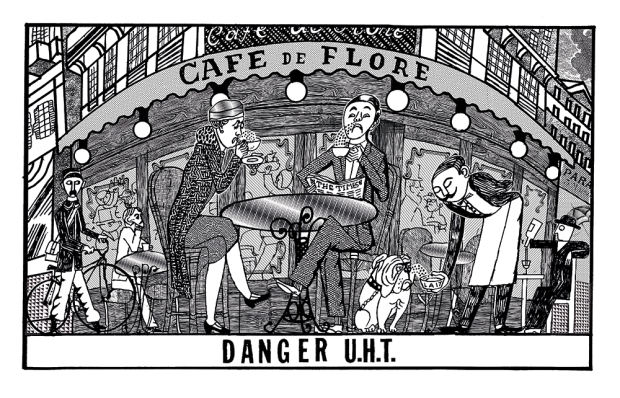Ordinarily, the Supreme Court sits in panels of no more than nine. All 11 justices will hear the government’s appeal, to avoid any suggestion that the composition of the panel might make a difference to the outcome. Caution is understandable: judges differ in philosophy, temperament and in how they understand their role.
Lord Neuberger has been the court’s president since 2012. He has denied that the UK has a (proper) constitution and asserted that joining the European Convention on Human Rights has been a journey from ‘the dark ages’ to ‘the age of enlightenment’. In Nicklinson, two years ago, he was willing to extend human rights law to try to force change in the law of assisted suicide. In the end he held back, preferring to try to nudge Parliament. But his reasoning suggests a willingness to stretch the law if it can be rationalised that Parliament still has the last word. This is confirmed by his misinterpretation of the Freedom of Information Act in Evans (on the Prince of Wales’s letters) last year. Lord Neuberger flouted Parliament’s authority in order to limit an executive power he thought unprincipled.
Lady Hale is the court’s deputy president. Appointed in 2004, she has long been an outspoken judge, publicly enthusiastic about the Human Rights Act and sceptical about parliamentary sovereignty. She has read statutes in ways that clearly depart from Parliament’s intent and in Nicklinson went further than Lord Neuberger in denouncing the Suicide Act.
Lord Kerr is former Lord Chief Justice of Northern Ireland. Termed a ‘human rights hero’ by some, Lord Kerr is another enthusiast for greater judicial power. He agreed with Lord Neuberger in Evans and in Nicklinson; only he and Lady Hale were willing to denounce the Suicide Act. In another case, he has asserted, astonishingly, that human rights treaties have effect in English law even without legislation.
If Lord Kerr and Lady Hale are the most reliably radical justices, many of the others are harder to peg. Lord Clarke, appointed to the Court in 2009, has not displayed such a disposition and outlined the case for restraint in Nicklinson.
Lord Wilson joined the court in 2011. In Nicklinson, he echoed Lord Neuberger. However, he did not support the extension of the law of negligence to apply to military action overseas and his dissent in Evans eviscerates the majority decision.
Lord Reed is one of the two Scottish justices. He served for a time as an ad hoc judge of the European Court of Human Rights and often articulated concerns about the limits of judicial capacity. He was on the panel that rejected Lord Kerr’s assertion about human rights treaties but joined Lord Neuberger’s judgment in the Evans case.
Lord Carnwath is a former chairman of the Law Commission and joined the court in 2012. He too dissented from the extension of negligence liability to the military and with Lords Reed and Hughes overruled Lord Kerr’s unorthodox view on human rights treaties.
Lord Hughes joined the court in early 2013. He made the case for judicial restraint in Nicklinson and in Evans. Lord Hodge, the other Scottish justice, joined in late 2013. He has recited the occasional judicial scepticism about parliamentary sovereignty.
Lord Sumption was appointed directly from the bar to the Supreme Court in 2012. He has criticised the expansion and misuse of judicial power by domestic and European courts. In Nicklinson, he was the intellectual leader of the case for judicial restraint.
Perhaps most interesting of all is Lord Mance, who became a law lord in 2005. He has considerable experience with EU law and has led the court in attempting to deter overreach on the part of EU courts and institutions. He has argued against ‘the judicialisation of war’. Lord Mance should see that the High Court misconstrued the way in which the European Communities Act 1972 incorporates EU law. He was in the middle ground in Evans and Nicklinson: wrong, in my view, but more careful than some. In 2008, he sought to limit the scope of the royal prerogative to legislate in crown colonies.
If the government’s appeal is well argued, it should be clear to the court that long-standing constitutional law requires the High Court judgment be overturned. The temptation for the justices will be to abandon the law under the guise of continuity with constitutional history. This whole litigation has been an exercise in tempting the courts. There are reasons to hope that a majority will resist temptation.
The post Who’s on the Supreme Court appeared first on The Spectator.
Got something to add? Join the discussion and comment below.
Get 10 issues for just $10
Subscribe to The Spectator Australia today for the next 10 magazine issues, plus full online access, for just $10.
You might disagree with half of it, but you’ll enjoy reading all of it. Try your first month for free, then just $2 a week for the remainder of your first year.














Comments
Don't miss out
Join the conversation with other Spectator Australia readers. Subscribe to leave a comment.
SUBSCRIBEAlready a subscriber? Log in